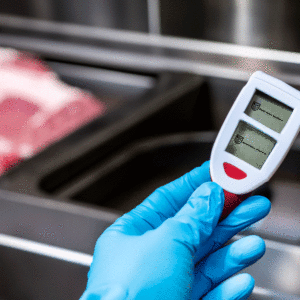
Maintaining proper temperature control is vital for preserving the quality and safety of food in various stages of production, storage, and transportation. Temperature monitoring systems provide a valuable solution for ensuring optimal conditions and safeguarding food quality. In this blog post, we will explore the benefits of temperature monitoring systems and how they contribute to the overall quality and integrity of the food industry.
The Importance of Temperature Control in Food Safety:
Temperature control is a critical factor in preventing foodborne illnesses and preserving food quality. Improper temperatures can promote bacterial growth, compromise the nutritional value of food, and accelerate spoilage. By implementing robust temperature monitoring systems, food establishments can effectively mitigate risks and maintain the highest standards of food safety.
Benefits of Temperature Monitoring Systems:
- Precise Temperature Regulation: Temperature monitoring systems enable precise regulation of temperatures in various food storage areas, such as refrigerators, freezers, and food preparation spaces. These systems continuously monitor and adjust temperatures, ensuring that food is stored and handled within safe temperature ranges. By maintaining optimal conditions, food quality and shelf life are prolonged, reducing the risk of food spoilage and waste.
- Early Warning for Temperature Deviations: Temperature monitoring systems provide real-time monitoring and alert capabilities. If temperatures deviate from the predetermined safe ranges, the system triggers immediate notifications, allowing swift corrective action. Early warning alerts help prevent potential foodborne illnesses, preserving the integrity of the food and minimizing the risk of serving compromised products to customers.
- Compliance with Regulations: Food safety regulations often require precise temperature control and monitoring. Temperature monitoring systems help businesses comply with these regulations by providing accurate records of temperature data. These records serve as evidence of adherence to temperature control guidelines during inspections and audits, ensuring regulatory compliance and mitigating potential penalties or fines.
- Quality Assurance and Productivity: Consistent temperature monitoring supports quality assurance efforts, ensuring that food is stored and processed under optimal conditions. By preserving freshness and nutritional value, businesses can deliver high-quality products to customers, enhancing customer satisfaction and loyalty. Additionally, temperature monitoring systems automate the process of monitoring and recording temperatures, saving time and streamlining operations.
- Cost Savings: Efficient temperature monitoring systems contribute to cost savings in several ways. By reducing the risk of food spoilage and waste, businesses can minimize financial losses associated with discarded products. Precise temperature control also optimizes energy usage, leading to lower energy costs. Furthermore, maintaining food quality and integrity enhances the reputation of the establishment, attracting more customers and driving revenue growth.
Temperature monitoring systems are indispensable tools in safeguarding food quality, preserving safety, and ensuring compliance with food safety regulations. By implementing these systems, food establishments can maintain precise temperature control, receive early warnings for deviations, comply with regulations, assure product quality, and achieve cost savings. Prioritizing temperature monitoring contributes to a safer, more efficient, and sustainable food industry, ultimately benefiting both businesses and consumers.
At SafeCuisine Solutions, we recognize the critical role of temperature monitoring systems in food safety. Our consulting services can guide you in selecting and implementing the right temperature monitoring solutions tailored to your specific needs. Together, let’s uphold the highest standards of food quality, safety, and integrity to deliver exceptional culinary experiences.

